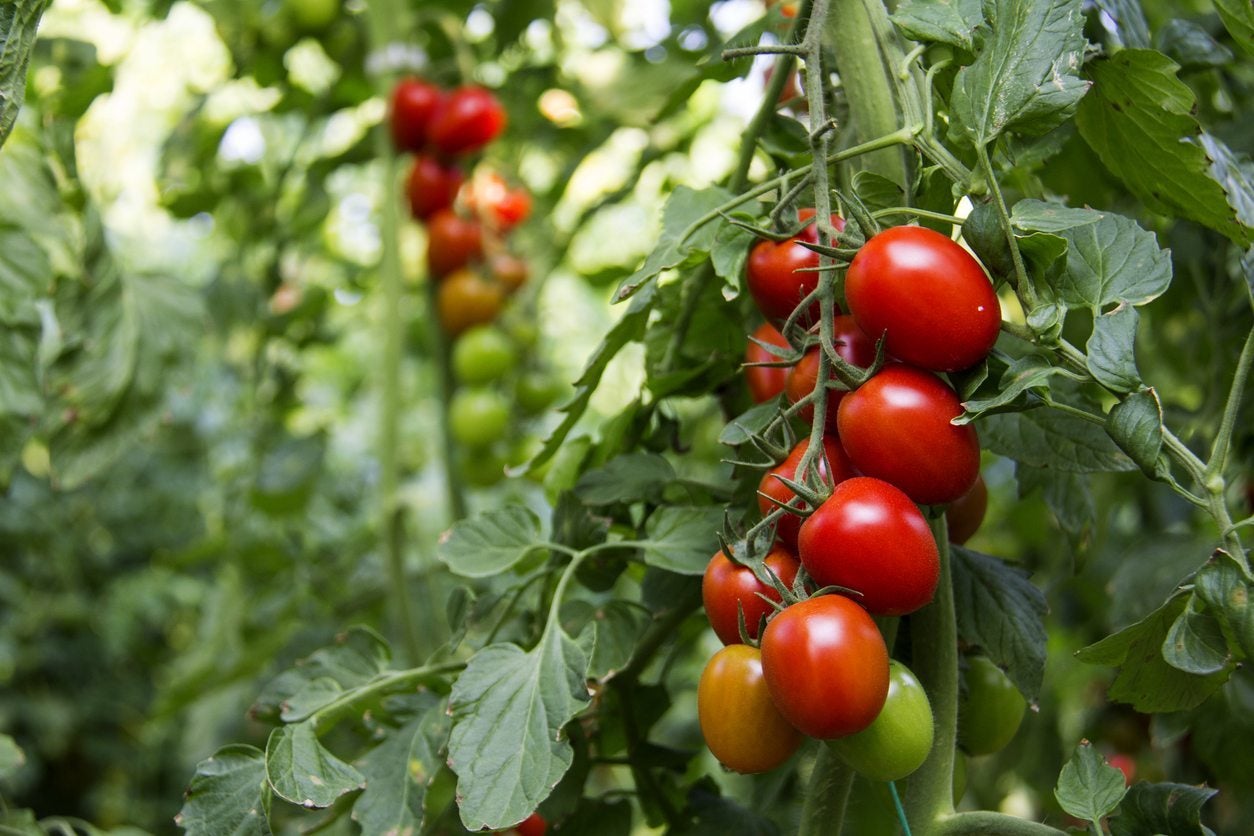Tomatoes For Zone 8: Learn About Zone 8 Tomato Varieties

Tomatoes are probably the most commonly grown garden crop. They have a myriad of uses and take relatively little garden space to yield 10 to 15 pounds (4.5-7 kg.) or even more. They can also be grown in a number of different USDA zones. Take zone 8, for instance. There are plenty of zone 8 suitable tomato varieties. Read on to find out about growing tomatoes in zone 8 and suitable tomatoes for zone 8.
Growing Zone 8 Tomato Plants
USDA zone 8 really runs the gamut on the USDA hardiness zone map. It runs from the southeast corner of North Carolina down through the lower portions of South Carolina, Georgia, Alabama, and Mississippi. It then continues to include most of Louisiana, parts of Arkansas and Florida, and a big chunk of mid-Texas.
Standard zone 8 gardening advice is targeted to these areas of zone 8, but it also includes parts of New Mexico, Arizona, California, and the coastal Pacific Northwest, quite a broad swath indeed. This means that in these latter areas, you should consult with your local agricultural extension office for advice specific to your region.
Zone 8 Tomato Varieties
Tomatoes are categorized in three basic ways. The first is by the size of fruit they produce. The smallest fruits are grape and cherry tomatoes. They are very reliable and productive tomatoes for zone 8. Some examples of these are:
- ‘Sweet Million’
- ‘Super Sweet 100’
- ‘Juliet’
- ‘Sungold’
- ‘Green Doctors’
- ‘Chadwick’s Cherry’
- ‘Gardener’s Delight’
- ‘Isis Candy’
Truly humongous slicing tomatoes require a warmer, longer growing season than zone 8 typically has, but good-sized tomatoes can still be had in zone 8. Some zone 8 tomato plant varieties to try are these perennial favorites:
- ‘Celebrity’
- ‘Better Boy’
- ‘Big Beef’
- ‘Big Boy’
- ‘Beefmaster’
Another way in which tomatoes are categorized is whether they are heirlooms or hybrids. Heirloom tomatoes are those that have been cultivated for generations with seeds passed down from mother to daughter, or father to son. They are selected for flavor first and foremost. Those that have been proven reliable in the southern zone 8 regions include:
- ‘German Johnson’
- ‘Marglobe’
- ‘Homestead’
- ‘Chapman’
- ‘Omar’s Lebanese’
- ‘Tidwell German’
- ‘Neyes Azorean Red’
- ‘Large Pink Bulgarian’
- ‘Aunt Gerie’s Gold’
- ‘OTV Brandywine’
- ‘Cherokee Green’
- ‘Cherokee Purple’
- ‘Box Car Willie’
- ‘Bulgarian #7’
- ‘Red Penna’
Tomato hybrids came about in a quest to thwart disease. Hybrid tomatoes will decrease the likelihood that the plants will get a disease but not completely eliminate that chance. The most popular hybrids include ‘Celebrity,’ ‘Better Boy,’ and ‘Early Girl.’ All are resistant to fusarium wilt and produce medium to large fruit. The first two are also resistant to nematode. If you don’t have much space and/or are growing tomatoes in a container, try ‘Bush Celebrity,’ ‘Better Bush,’ or ‘Bush Early Girl,’ all of which are resistant to fusarium and nematodes. Tomato spotted wilt virus is another serious disease of this fruit. Hybrid varieties that are resistant to this disease are:
Gardening tips, videos, info and more delivered right to your inbox!
Sign up for the Gardening Know How newsletter today and receive a free copy of our e-book "How to Grow Delicious Tomatoes".
- ‘Southern Star’
- ‘Amelia’
- ‘Crista’
- ‘Red Defender’
- ‘Primo Red’
- ‘Talledag’
Lastly, the third method for categorizing tomatoes is whether they are determinate or indeterminate. Determinate tomatoes stop growing when they reach full size and set their fruit over a four to five week period, and then they are done. Most hybrids are determinate types of tomato. Indeterminate tomatoes grow all season, continuing to set successive crops of fruit all summer and into the fall. These types get very large and need a tomato cage for support. Most cherry tomatoes are indeterminate, as are most heirlooms. When growing tomatoes in zone 8, there are plenty of options, so use them. To give yourself the best chance of success, plant a variety of tomatoes including some cherries (foolproof!), some heirlooms, and some hybrids along with some disease-resistant varieties.

Amy Grant has been gardening for 30 years and writing for 15. A professional chef and caterer, Amy's area of expertise is culinary gardening.